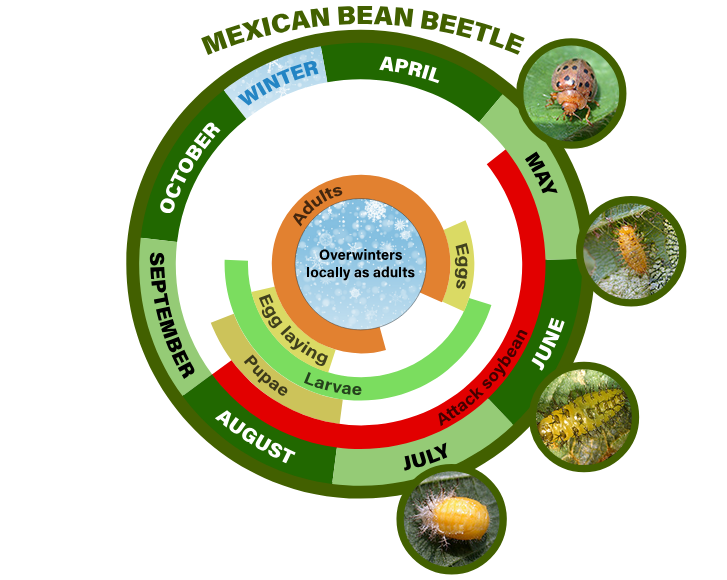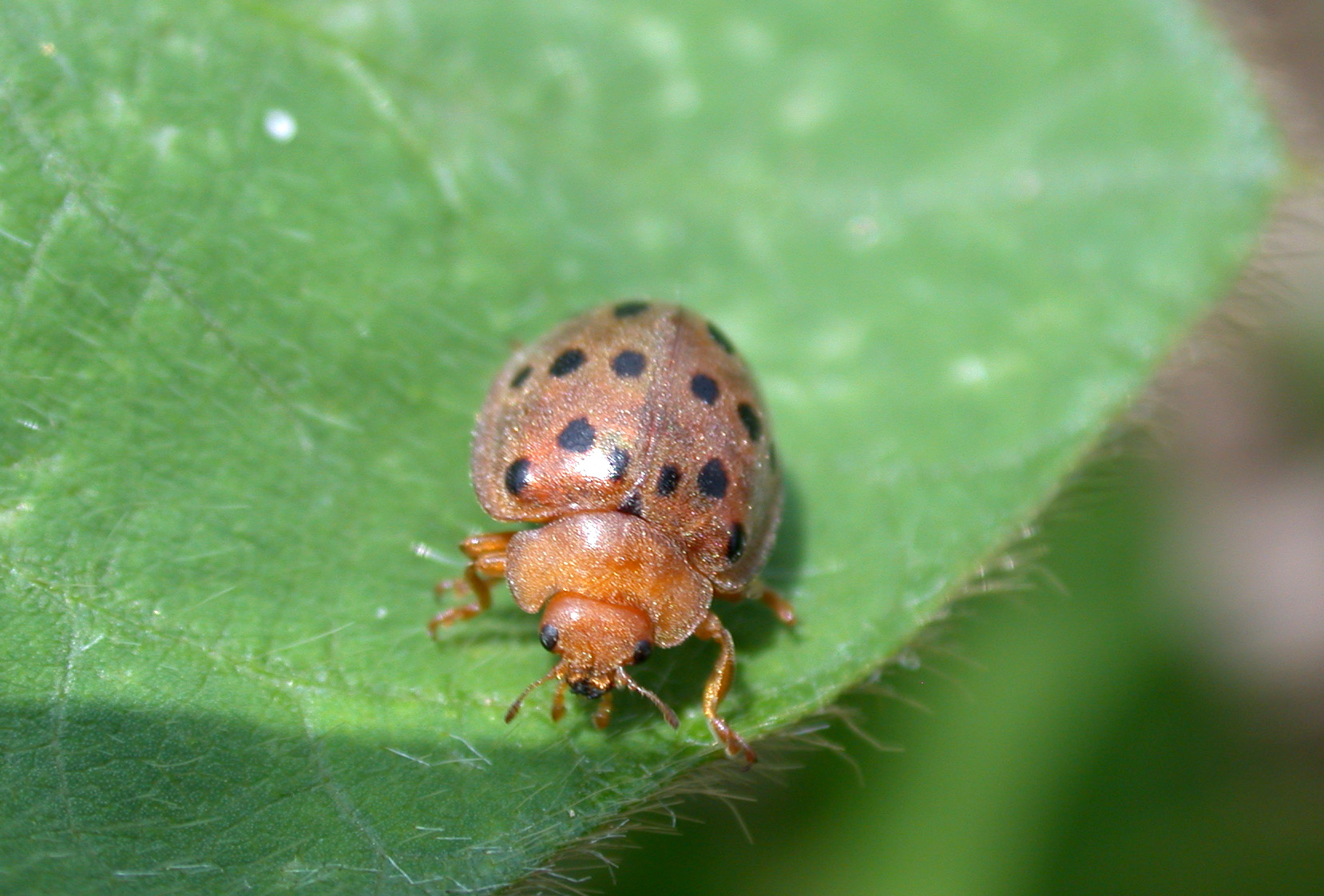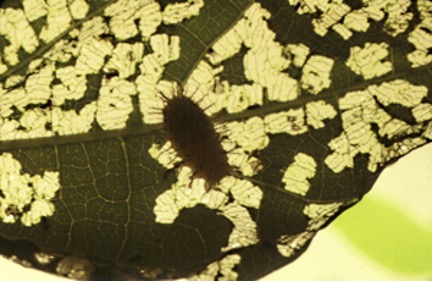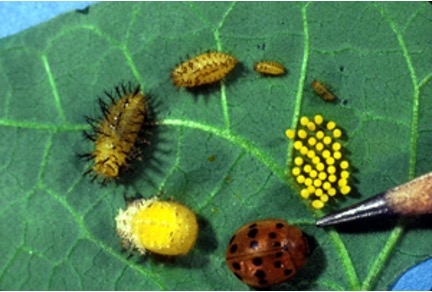Mexican Bean Beetles (Soybean)
Epilachna varivestis Mulsant
Search the Pest & Crop Newsletter

The ability to see these full-sized life-cycle images is currently disabled to resolve an issue.
Appearance and Life History
The Mexican bean beetle is native to Mexico. However, it is frequently found in some areas of the Midwest, including southern Indiana. Adult and larval stages of this insect feed readily on the foliage of many varieties of beans, preferring edible beans to soybean.
The adult Mexican Bean Beetle is oval-shaped and copper-colored, with 16 black spots on its back. It is about 5/16 inch (8 mm) long and 1/4 inch (6 mm) wide.
Females lay yellow, oval-shaped eggs in clusters on the underside of bean leaves. These eggs hatch and yellow larvae with branched spines that cover their soft bodies emerge.
There are 4 larval stages, the final one reaching a length of 1/3 inch (8.5 mm), before transforming into a bright yellow pupa. The pupae are usually found attached to the underside of leaves.
The Mexican bean beetle overwinters in the adult form, hibernating in woodlands adjoining fields and in soybean plant refuse within fields. The overwintered adult can be found on soybean seedlings early in the season. Two overlapping generations develop throughout the Midwest each year. At least one form of the beetle may be present in a soybean field during the entire growing season, and often all four life stages can be found in a field simultaneously.
Damage
Soybean plants can be severely defoliated by both the adult and larval forms of the Mexican bean beetle, though typically the larvae are more damaging. Larvae strip away the top layer of leaf tissue between the veins, giving the leaves a skeletonized appearance. Adults consume all leaf tissue between major veins, producing a distinctive lacy appearance to the foliage. The leaf veins remaining after Mexican bean beetle feeding often fall out due to wind or rain, resulting in large, ragged holes in the foliage.
Late in the season when leaves become less attractive and begin to yellow, beetles may feed on stems and developing pods. Damage to pods is usually characterized by abraded outer tissue. Reductions in yield are typically caused by beetle and larval defoliation and less likely from stem and pod feeding.
Sampling Method
If, during sampling, Mexican bean beetle feeding damage is evident:
- Determine the percentage defoliation level for individual plants in 5 separate areas of the field and estimate the average percentage defoliation level for the field as a whole.
- Determine the size of the population by taking 20 sweep net samples in each of the 5 areas of the field. Record the number of Mexican bean beetle adults and larvae separately. Determine the average instar of the larvae by using the guide given below.
If beetles are feeding on pods:
- Randomly select 2 plants in each of 5 areas of the field. Count the number of pods per plant and the number that show insect damage (10 total plants). Figure the percentage of damaged pods per plant for the field as a whole.
- Note if the pods are green, beginning to turn yellow, or are yellow/brown.
- Determine the number of beetles per sweep and whether they are actively feeding on the pods.
Management Guidelines
Soybean Insect Control Recommendations: E-series 77-W (PDF)
- For leaf feeding, consider the average developmental stage of the larvae present (research has shown that 3rd and 4th instars are the most destructive larval stages).
- Note: if economic damage is noted and high numbers of eggs and/or pupae are present, control may be difficult unless an insecticide with residual activity is used.
- Pod feeding is rarely a problem with Mexican bean beetle since they rarely feed through the pod surface to the beans. However, extensive feeding damage may predispose the pod to attack by plant pathogens. If pods are still green, treatment is probably justified if 10% of the them show feeding damage and the beetles are present and actively feeding on the pods. Consider that feeding will cease once the pods mature and take on a yellow/brown coloration.
Prebloom to Full Bloom (stages V1 to R2): greater than 30% defoliation. Beginning pod to
beginning seed (stages R3-R5): greater than 10% defoliation. Full seed (stage R6): greater than
15% defoliation with beetles or larvae actively feeding.

When estimating the percentage of defoliation, pull up a plant, hold it above you, and observe the amount of light penetrating the canopy. This is also helpful in determining where the damage is in the canopy. Lower canopy damage may be old feeding, whereas upper leaf defoliation is recent feeding.





